*This entry has 2 parts. Part 1 has the background story, Part 2 has directions and photos. You can skip Part 1 if you’re in a hurry or just don’t care.*
Part 1
In March 2014 I received devastating news. It was a photo of a Redwing, seen in my neighbourhood. The devastation came when I looked at the date the photo was taken. December 16, 2013, fully three months earlier. Birders went to check out the area, just in case it was still present, but the bird was never seen again. The good news from a provincial standpoint was that since the bird was photographed it still represented the first record for British Columbia. The record sailed through the BC Bird Records Committee fairly easily, with only mild grumbling that nobody knew about it at the time. For me, it was more personal than that. The bird was on my turf, at a hotspot that I discovered when I first moved into the neighbourhood, was only a few hundred metres from my yard as the thrush flies (though there’s a hill between my yard and the location, so it’s not even remotely visible), and it would’ve been a lifer. I’d seen 26 species of Turdus thrush, but all I could think of was the one that got away. That thrush had haunted me every single time I walked around the neighbourhood, and I’ve painstakingly looked through what must be thousands of American Robins in the intervening years.
On Friday my wound was re-opened when I checked out Bruce Mactavish’s excellent blog over at http://brucemactavish1.blogspot.ca/. On December 16 (the anniversary of the BC Redwing) Bruce posted about the absence of Redwing in Newfoundland the past few winters, and the hoped for arrival of Euro Turds (the European Turdus thrushes, though Eurasian Turd is probably more correct from a west coast perspective, it doesn’t have the same ring to it) this winter owing to an excellent crop of “Dogberry” (Newfie for Mountain Ash) and favourable winds over the Atlantic. I spent 6 weeks on a rickety boat on the Atlantic with Bruce a couple summers back, but somehow he failed to introduce me to the term “Euro Turd” during those weeks at sea; I’m now glad to add it to my birding slang.
Fast forward to today, December 19, 2015. The day of the Victoria Christmas Bird Count. I spent much of the past week comatose in bed, brooding what has been by all accounts a miserable cold. The weather forecast for count day was, as usual, calling for rain and wind, and the thought of being sick, cold, and wet didn’t sound very appealing. I woke up about 7 am and strongly considered not getting up. I was still undecided when the phone rang and the count area-coordinator asked where and when my team should meet me. I reluctantly dragged myself up, downed some Dayquil, and headed out for what I decided would be just a few hours of counting. Around the north side of Panama Flats we encountered our first small groups of American Robins and I again recounted the sad tale of the Redwing that got away, and why it was always important to check through robin flocks.
Several hours later and the urge to see birds exceeded my desire to crawl back into bed. I explained that just up ahead was our only chance to find California Quail in our designated count area. As if on cue, one called. Bingo. I don’t know exactly what are area boundaries are, but we’ll just go as far as a vacant lot that has a lot of potential I said. We arrived at the vacant lot to find it, well, vacant. Finally a Bewick’s Wren popped up. A couple minutes later and a few Pine Siskins called from the treetops. As I was trying to get a visual on them to search for Common Redpolls (this has been an excellent redpoll year on the coast), one team member, Mike Davis, said he had a Downy Woodpecker, but I couldn’t figure out which branch he was talking about, and since we’d already tallied a couple I gave up and started to look for the siskins again. Just then a bird shot past my view, and my heart rate instantly climbed as I noticed a flash of orange throughout the underwing coverts. My suspicion was confirmed when the bird landed nearby and I yelled out “REDWING!”. Mike chimed in and said something to the effect of “That’s the bird I was looking at”. As many birders know, there’s a huge difference between twitching a rarity and finding your own. This bird literally had my hands shaking, as I tried to soak up as much as I could, snap off some record digiscoped shots with my cell phone, and let others look in the scope too. Far too quickly the bird took off to the west, flying straight and rapid. In the direction it fled I found a bumper crop of Holly berries. Despite hanging around for a while to greet the many freshly arriving birders the bird didn’t seem to be coming back. Reluctantly I decided to finish off as much as I could of my count area. Luckily a few birders did manage to catch sight of the bird again, on both sides of the road, including in the holly bush we had been looking at!
To recap, this is almost the exact location and nearly to the day when a Redwing was discovered in 2013. Please see part 2 for more discussion.
Part 2
To assist birders who want to search for this bird, the following are some directions and my poor record shots of the bird. Opinions on the age of the bird are highly desired.
The bird was in a vacant lot on both sides of South Valley Drive in Victoria, BC. The house closest to these lots is 3940 S. Valley Dr. There is parking along the street here, though it is a densely-housed residential area (and fairly upscale), and birders are reminded, as always, to act responsibly, not to trespass in any yards, and just not be jerks in general. Vehicle traffic is generally light, and children playing, dog-walkers, etc. should be looked out for on the roads. Despite what Google Maps shows, South Valley Drive is now paved and connected right through the middle of this vacant lot. South Valley Drive can be accessed by car from 3 entry points off of Wilkinson Rd., or by foot from the end of Tulip Ave., Daffodil Ave., Chesterfield Rd., or Hatfield Rd.
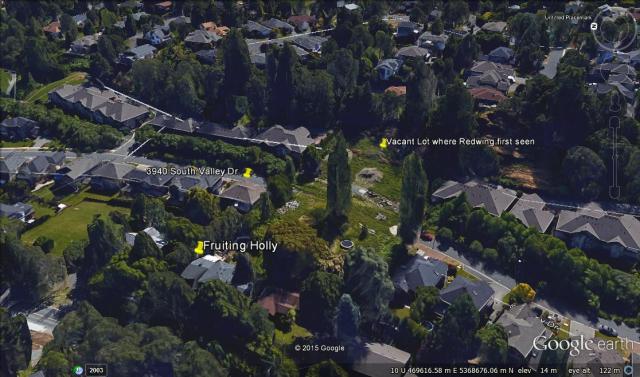
The vacant lot on both sides of South Valley Drive where the Redwing was seen. It was first located on the east side, then flew over to the area where a fruiting holly was located on the west side. *Note that S. Valley is now paved right through this vacant lot, and the road is a through-way. Google maps has not yet been updated to reflect this.
The Bird!
Due to the fact that the Redwing is in virtually the same location it was found in 2013, and nearly to the day (Dec. 16 vs. 19) of the previous record, I have been assuming it is the same individual. In the field I attempted to look for pale tips to the greater coverts, and didn’t notice any. I failed to register the tertials in my memory. In reviewing my terrible phonescoped record shots, there appears to be pale tips to several of the outer greater coverts and, more distinctly, white tips on the tertials. These are features of hatch-year/first-winter Redwings. If this is a first-winter bird, I do not have the mathematical prowess to even estimate what the chances would be of having two Redwings show up in the same location just two years apart. It must be astronomical though. For this reason, opinions are highly sought on the age of this bird based on my terrible photos. Hopefully the bird will stick around for lengthier viewing and better quality photos.

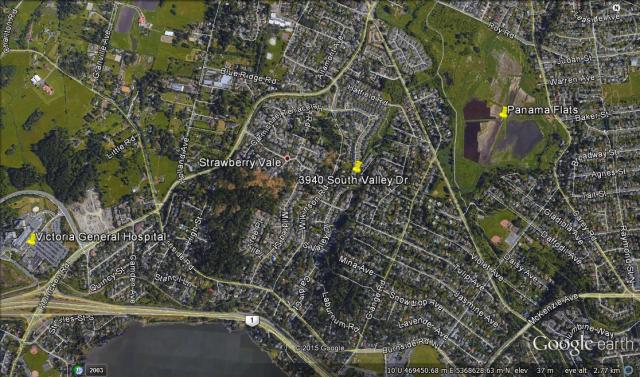
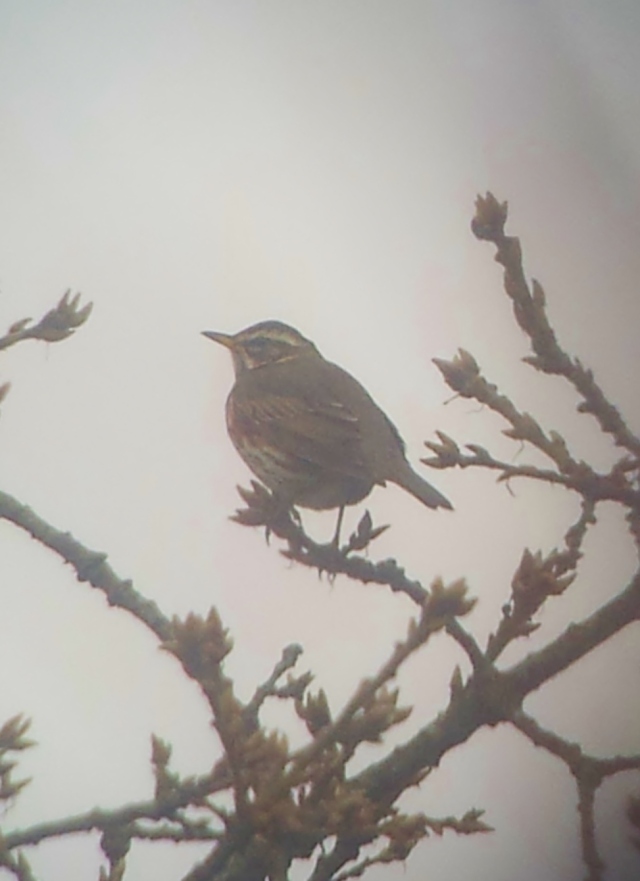
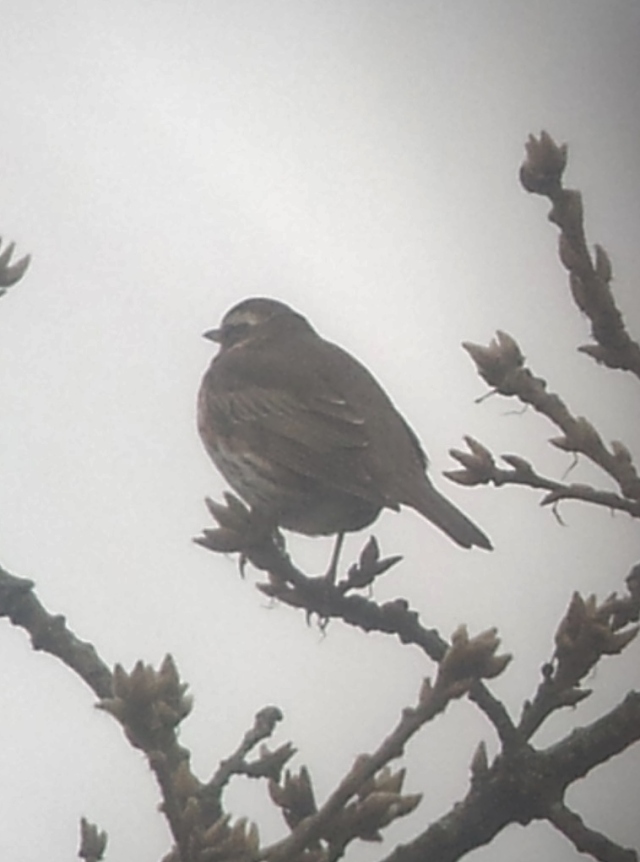
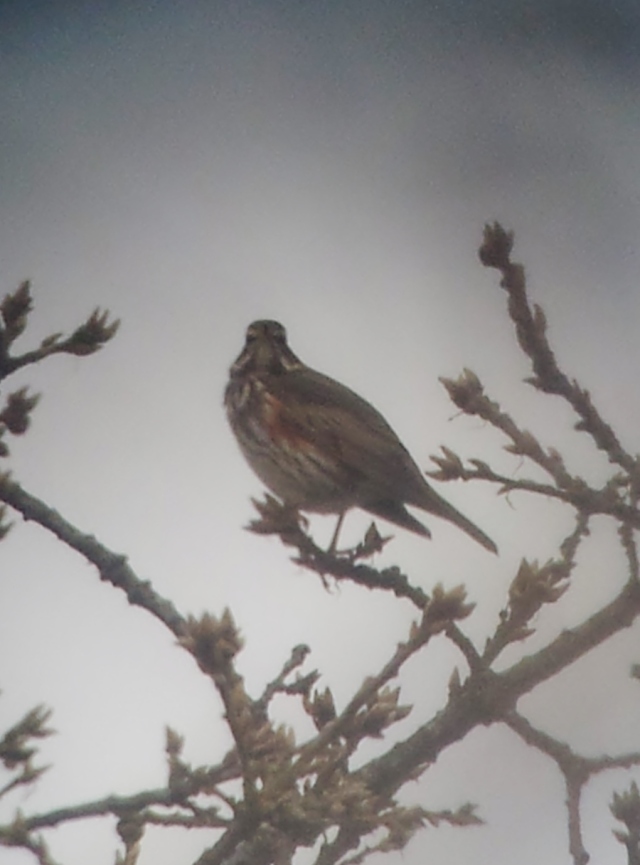
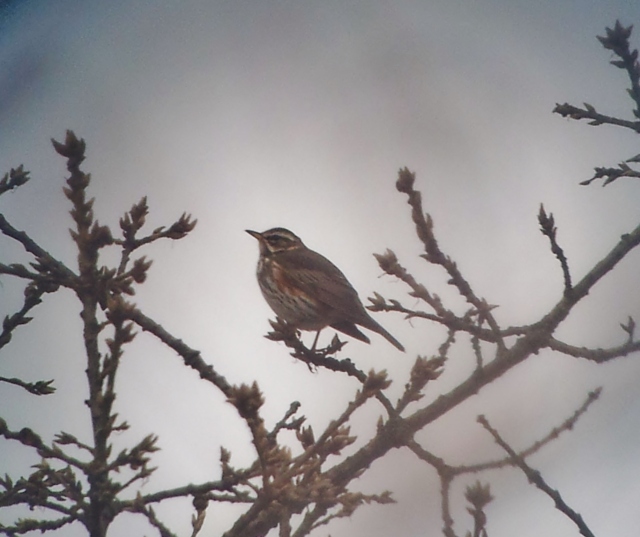



Hi Nathan
What a belated Xmas present! And what a story!
Pingback: #ABArare – Redwing – British Columbia « ABA Blog
Thanks Nathan for the great find, it showed up at 3:40 in the holly at the end, good scope looks for 5 minutes and was gone. All the best in your new year. Peace Artie from Tofino
Pingback: Birding Community E-Bulletin, January 2016 | The Waterthrush Blog
Hi there. I guess in part 1 you are talking about me. We were visiting our in-laws on Tulip Ave. and they told me about the little greenspace/park (South Valley Park) just north of their place. At the time you couldn’t access it from their place without going over to Wilkinson Rd and taking the path from Wilkinson to the paved path along the wetland. On my way back I spotted a bird just east of Wilkinson overhead in a deciduous (leafless) tree. When I looked at it with my binoculars, I couldn’t ID it, so I was lucky enough to get two frames with my camera. When I got back to the in-laws I pulled out the bird books and couldn’t find a match. At first I thought it was a Pipit, but that didn’t work. Then I thought it was just a BC bird species I wasn’t familiar with and figured I would have lots of time when I returned home to look at it on the computer and find the answer. I looked and still couldn’t come up with anything. It being the Christmas season by then, I forgot about it until March and then sent it to some friends. They suggested I send the photo to Dick Cannings and the rest is history. If I’d have even had an inkling that it was rare I would have pursued it while I was still in BC. I’m glad that others have found it and still always have my camera with me when I’m birding.
No worries Ken, and thanks for filling in some of the story. Congratulations also on being the original finder of the first Redwing in the province. There’s some new evidence that this current bird may actually be the same individual as the one you found afterall. I briefly met one of your in-laws when walking back from the bird one day; now that the road has been put through it certainly makes doing a loop walk much easier! I actually looked for your bird in March of that year once news broke, as well as several times last winter just in case it returned, but seeing how skulky this bird is I’m not surprised that no one found it again. Keep that camera with you, hopefully you strike gold in this neighbourhood again. I could use a Fieldfare!